A Sunday Conversation with Ventum’s Diaa Nour
Ventum CEO Diaa Nour issued a personal challenge to himself when the COVID-19 pandemic hit the United States. He used an isolation period after arriving back to the US to get himself into the best shape possible and that’s when his all-in personality took over.
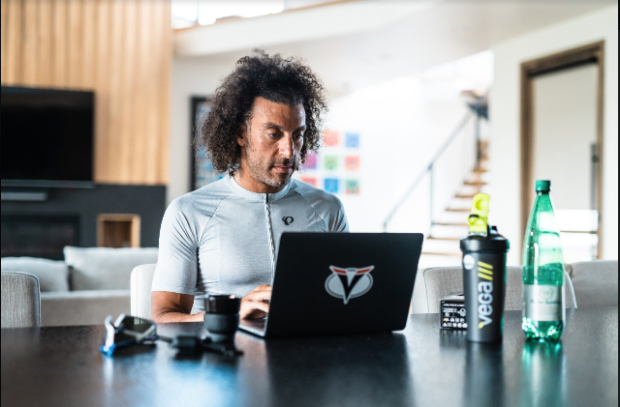
Slowtwitch: Let’s start with: why were you in isolation? And how did you spend that time?
Diaa Nour: I was in Switzerland on vacation and we were supposed to be there for a few days. COVID 19 hit and I got on the last flight from Switzerland back to the US. Because I came back from a high risk country I had to quarantine for 14 days. When it started, I thought I’d just be doing this for two weeks and not for months.
I asked myself, “when I come out of this, do I want to be a better person or a worse person? Am I going to take this time to make the best use of it, or am I going to sit around, eat unhealthy, and kill time?” For the first time I said, this is a blessing. I’m usually on the road 90% of the time, without a bike, no consistent good eating habits, traveling from time zone to time zone. I can use these two weeks to consistently eat healthy and train. I said, let’s do this. Let’s do something that will better me and see if I can come out better from this whole mess.
I’m a pretty extreme person. I don’t have moderation. Zero. It’s one of my greatest qualities and worst faults. I’m either on or off. I decided to throw myself into some crazy training. I started doing stories on Instagram about it and it was really well received. All of a sudden I felt there was a community and I was encouraging others to join this quarantine lifestyle.
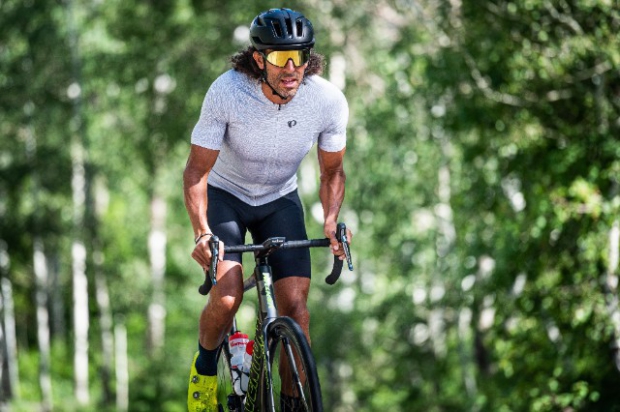
ST: Is that how the CEO challenges came about?
Diaa: It was a snowball effect of positivity that brought about what we started calling the CEO challenges. These were week long challenges that I threw out there to the general public.
The first one was crazy. It was to ride your bike on the trainer as much as you can in one week. 300 people participated and they kept doubling. I ended up riding almost 1000 miles, with one day riding 266 miles. But, I had to in order to win that challenge, which was driving me. When I walked into quarantine I was almost 200 lbs. I’m sitting here now at 158 lbs. When you’re on the bike for 1000 miles in one week, you’re on it all day. That’s a huge volume block. That was the first challenge.
The second challenge was to train like a pro. We had Kevin Collington come into the house and I had to train exactly like him and try to hit his paces. That was interesting as well. It was 24 hours worth of training that week. What we saw was that I was able to fake it for days 1, 2 and 3 but when the load started creeping up and up, by Thursday I started breaking down and couldn’t hit his paces.
The last challenge was to see how many feet I could climb in one week. I ended up doing 63,000 feet that week. These challenges have been motivating me but also I would say the feedback I was getting from others equally motivated me to keep going with these.
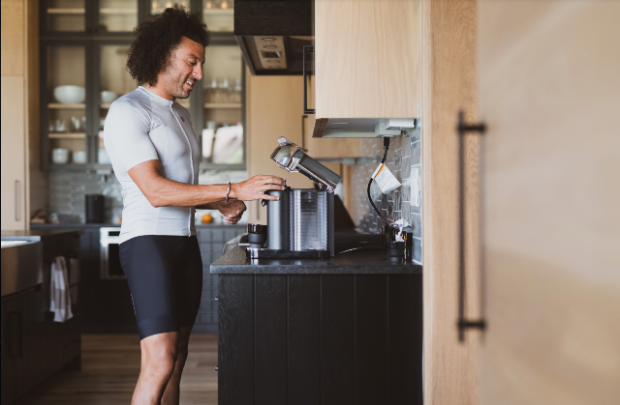
ST: Was the rest of the Ventum staff on board?
Diaa: I’m a pretty private person, maybe posting once a month on social media. But now I’m letting my personality come through. I’m a prankster, I’m an annoyingly positive person. This is a long-winded way of saying, I wanted to separate Ventum from that. Did I get help from my staff, absolutely; they were an integral part of it. But I wanted people to understand this wasn’t a corporate play, this was an organic thing where I am the CEO of this company but I just wanted to motivate myself and others. At the end of the day, did it help sales? I’m sure it did, because in talking to hundreds of people on Instagram, I was getting asked a lot about the bike. But it wasn’t a Ventum play, it was something I wanted to do. Luckily I got excellent support from the staff.
ST: After such a big bike block, how was it bringing running into it?
Diaa: I’ve always been a runner and come from a running background. Heavy or light, I can still run. It’s something that’s been pretty consistent in my life. I was very worried because of all the bike volume, especially going into Ironman VR where I went head to head against Kevin. I was worried about the lactic acid in my legs. It took many, many days to recover from that huge block with Kevin so I was worried about the power on the bike. Even more though I had no idea what my running legs would be like. But the bike volume helped with my running. I can assure you, for me at least, bike volume is one of the best ways to get into running shape. For a few obvious reasons. Weight loss. To lose 35-40 pounds, it’s going to make you quicker. The other thing the bike does is that I can back up huge rides with another huge ride. The load on your knees, hips, back. I can’t do that in running. I can’t do three or four runs in a row and not risk injury. So it was this great hidden secret. I’m sure some people will read this and think it’s so obvious but it wasn’t obvious to me.
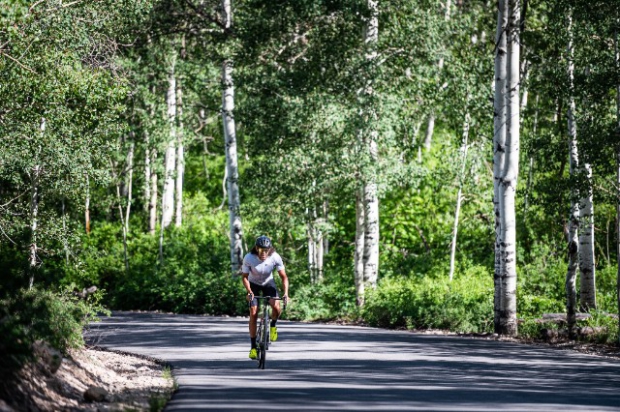
ST: Was this the most you’ve ever spent on your bike before?
Diaa: Absolutely. There was a 35 hour week on the bike. There was a 40 plus hour week on the bike. I was talking to Rohan Dennis and he said you’re training like we are when we’re training a lot. The other thing that was really exciting was because I come from a distance running background, I know I have the lung capacity and the endurance, and I know I’m built for endurance, but I’ve never actually tested it on the bike like that. One of the things that was exciting to see was how quickly I improved. We have these crazy climbs here in Utah. One of them is called Pine Canyon. I first rode it in an hour and four minutes then a few days later took three minutes off. It’s so rewarding.
Being the owner of this company and now really being able to live this lifestyle I’m head over heels, in a new stratosphere of love when it comes to being on a bike. Nothing makes me happier right now than being on my bike which wasn’t always the case before.
ST: Do you see a cycling boom percolating due to this pandemic?
Diaa: Cycling is here to stay. People are investing in their health. Sticking to our customer base, if they weren’t cycling what would they be doing? Most likely golfing. It’s a pretty social sport. Regardless if we see a second, third, fourth wave of this virus, I think cycling has seen a huge benefit and it’s here to stay. Some of those people who dusted off their old, neglected bike or bought a new $800 one, are going to find triathlon as well. If there is anything this pandemic has shown us, at least in regards to bikes, it’s how indispensable they are. Gyms, tennis courts, basketball courts, everything was closed. You could run but otherwise cycling was the only option.
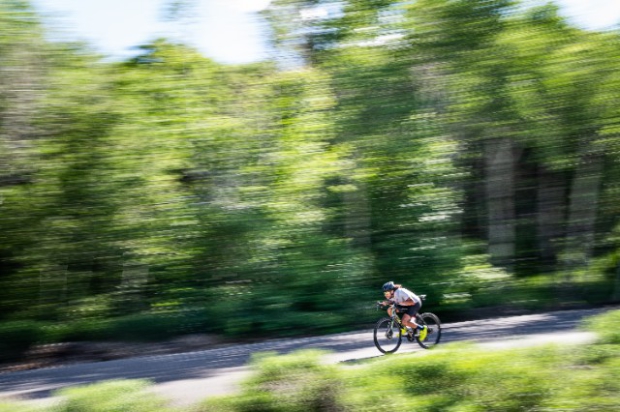
ST: Can you tell us about Ventum’s evolution as a bike company?
Diaa: We incorporated November 19th, 2014. The beauty of teaming up, especially with Jimmy, is they had been working on this project, the Ventum One, for many years on the side. There were no plans to commercialize it. It was for research for aerodynamicists and other engineers in Australia who were doing this for fun. We delivered our first bikes Q4 2015 and we were in Miami until summer 2019.
Jimmy has since gone on to pursue different things a couple of years ago but is still a super close friend and only lives a mile away. So, we both ended up in Utah. Oh man, that guy can handle a bike. He was trying to teach me to Superman. I’ll take risks, but that was the scariest thing I’ve ever tried to do on a bike.
So we started in triathlon with the Ventum One, our flagship bike. From there we brought in the Ventum Z in 2016. The Ventum Z has similar technology as the Ventum One, a slight aero penalty but the price is very attractive. We knew triathlon so we wanted to start there. Some people asked us why we would start in a niche market that was saturated. But it’s what we knew and knew really well. We knew if we could succeed in the tri space then we could hit different verticals, like road, and others that have a much bigger market.
In 2016, we started working on our road bike, our NS1, and we showed it in Kona in October 2018. We had a sneak peek there and it went on sale in June 2019. During the pandemic we came out with a NS1 mechanical. So similar to the difference between our Ventum One and Z, same with the NS1. It’s a really good price point to get into road cycling. We’ve always known we wanted to be a full cycling line. Ventum is always going to be a premier, higher end brand. Are we ever going to do an $800 bicycle? No way. Do I wish we had one right now. Yes, because it’s probably the hottest selling item in the world right now because of COVID-19 but it’s just not us. We’re on the higher end of the spectrum and we’re doing things the way we know how.
So we have an offering in tri and road so our next exploration is going to be gravel. We were meant to showcase our new gravel bike at Dirty Kanza, which obviously got postponed till September. By the way, I’m doing DK. I’ve never sat on a gravel bike, I’ve never graveled in my life, so of course I’m signed up for the 200-mile, toughest gravel race in the world. But it’s a challenge and I’ll be spending the summer learning how to ride on technical trails. Gravel is the fastest growing segment and I also feel like it’s the Wild Wild West. No one has come in yet and standardized distances, specs, anything, so it’s still a bit fragmented.
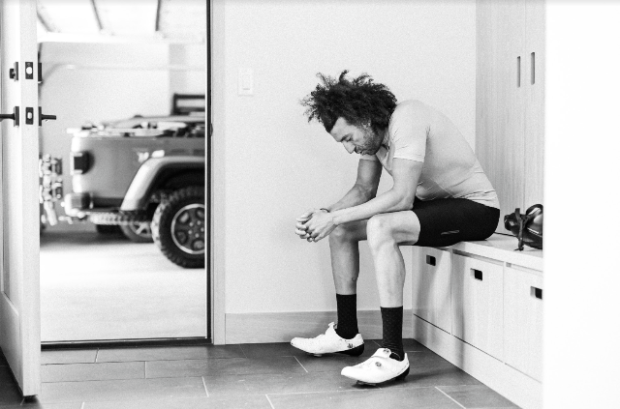
ST: Does gravel remind you of triathlon in that way?
Diaa: 100%. But triathlon before we started. Like the triathlon of the 80’s and 90’s. I think gravel is heading to a great place. Is there a company like WTS or Ironman who is going to come in and buy up all the races and standardize everything? I don’t think we’re there yet. But I think people want to get off the road, they want safer riding, and they still want speed. It’s also got the versatility of going from road to trails and so forth. There is a huge demand for it and the equipment that’s been used for it so far has been subpar. The manufacturing technique has not changed. We want to bring technology from the Ventum One, from the NS1, and bring it into gravel. Why shouldn’t your bike be lightweight and carbon? Why shouldn’t it be aerodynamic? Look at Dirty Kanza. You’re out there time trialing for long stretches of that 200 miles so why not look at aerodynamics. Look at double-molds, EPS silicone manufacturing as opposed to very cheap manufacturing. The reason people will tell you this hasn’t happened earlier is there was no critical mass and the consumer wasn’t ready to pay a certain price point for that. Expect a lightweight frame, super aerodynamic, and you’ll be able to look at it and see how it’s related to the NS1. Cleanly integrated, with no cables showing, really sleek. From there, you can probably imagine where we’ll want to go.
ST: Did bringing in outside investment help you to take these steps sooner than you’d hoped?
Diaa: Yes and no. I self-funded this project from the inception and I was the bottleneck. Bringing in institutional capital money really helped. However, it does tie up our hands a bit because we have to go through a bit more red tape and things have to be approved. I am no longer the sole decision maker which is good and bad. The money facilitates the growth but sometimes limits the creativity is how’d I’d say it so we do have some new challenges.
Through the pandemic, I have found my love for the bike again and for what we’re all about again. The new reality of my job means more time on contracts and with legal and in boardroom meetings so I do very little with bikes anymore. So, I’m doing what a CEO is meant to be doing. I know that’s the right progression, what I should be doing, but I started missing a tangible side of the business: talking to our customers and riding the bike. This experience was really good for me to remind me what I was missing. Outside capital comes with benefits and costs. It allows you to supercharge your growth and it cements us as a company that plans to stick around for a long, long time. On the other hand, it’s been more limiting and there are times when it makes my job less fun.
ST: You are living in a more bike friendly environment now having moved Ventum to Utah. How have you settled in?
Diaa: It’s heaven, it’s heaven. We used to have an office in Boulder and our main office was in Miami. Part of this Series A round, with institutional money that came in we had a requirement to move to Utah. I can be happy anywhere but I am a city and beach boy. I lived in the heart of South Beach. And I lived the Miami lifestyle through and through. So I was a little hesitant. I now live in the mountains, I drive a pickup truck and I couldn’t be any happier. If you told me a year and a half ago I would leave South Beach and move to the mountains, I would never have believed you. My quality of life has changed for the better and for that I’m very thankful.
ST: What other outdoor challenges do you have coming up?
Diaa: I’ve got a lot of challenges cause I can’t sit still. I was just in the Grand Canyon last weekend and did the rim to rim to rim, so 44 miles of running. 11,000 feet ascending and descending. With the launch of our gravel bike, we’re putting on our own gravel race in Utah. We’re being a little shy about fully announcing it because so far we’re still approved but it doesn’t mean we’ll have permits in a month. There are options for either a 40 mile race or a 80 mile race. Then the following week is Dirty Kanza. I’m looking for a 70.3 to do later this year or early next. Would you believe me if I told you I’ve never done a triathlon? Lauren Brandon is going to be my swim coach because I don’t swim. I’ll do Cape Epic in South Africa. Then next summer, I’m not going to tell you what I’m doing, but I’m going to try and set a world record. It’s a full schedule.
You can follow Diaa's future adventures at @Diaa10.


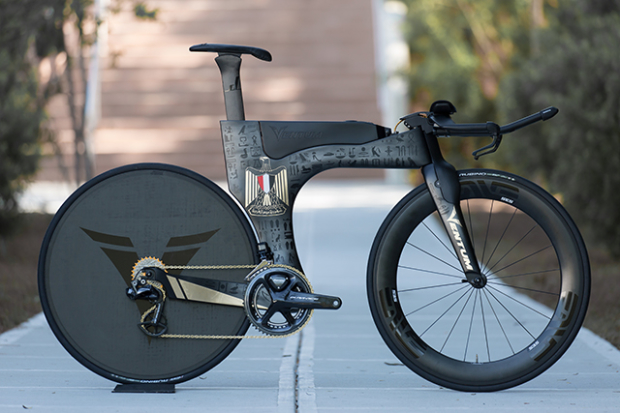
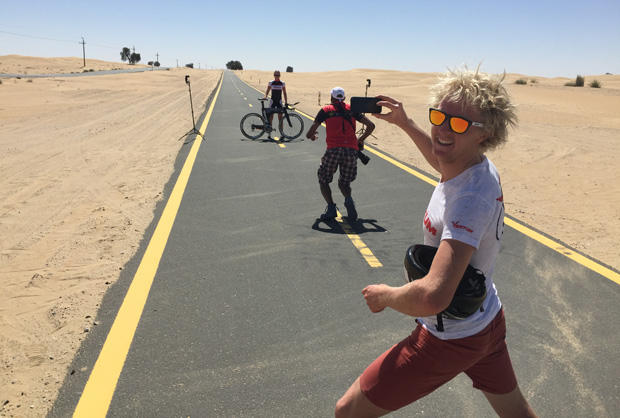
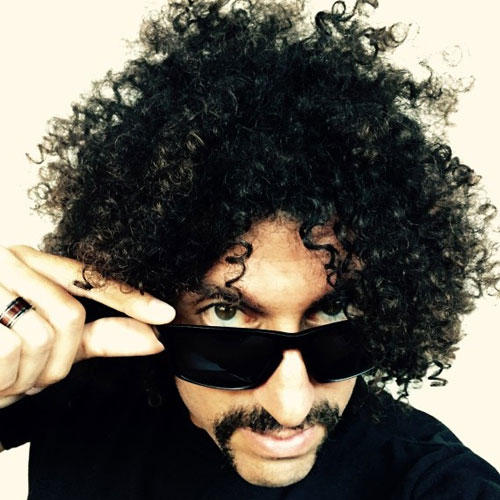
Start the discussion at slowtwitch.northend.network